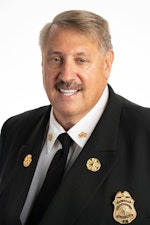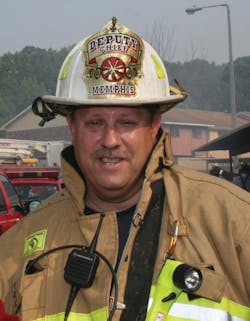The constant in life is change – and fire departments operating in the new healthcare environment, since the implementation of the Patient Protection and Affordable Care Act (PPACA), must be willing to change or be left standing on the platform watching the train leave the station. Some would even contend not only will fire departments be standing there watching the train leave the station, they will probably get run over by the train if they do not adjust to the new healthcare environment.
The PPACA is changing the landscape of healthcare and many predict it will have a dramatic impact on patients who use the 911 system. Since March 2010, when the PPACA was signed into law, numerous articles have been published in fire service periodicals regarding how it will affect our emergency medical services and transportation operations.
Some fire departments have already changed their names to reflect the expanded mission of providing healthcare outside the traditional “you call, we haul,” scenario, meaning “you call 911 and we haul you to the emergency room regardless of what you’re chief complaint is.” One such department in Arizona is the Mesa Fire and Medical Department, which changed its name in 2012, inserting the word “Medical” to more accurately reflect that 80% of its calls are medical in nature.
What the future will look like
More fire departments continue to look at new developing models in EMS that push away from the traditional and outdated of model of taking everyone who calls 911to a hospital emergency department. Unfortunately, fire departments are traditionally slow to change and accept some type of adjustment.
Some departments are becoming aggressive and looking toward the future and what those delivery models will look like. One such department that gets it is the Tulsa Fire Department (TFD) in Oklahoma. Last year, while attending Fire-Rescue Med in Las Vegas, Tulsa Fire Chief Ray Driskell attended a session called “Coping with the Changing EMS Environment.” During that training session, Chief Driskell learned about the impact the PPACA will have on the EMS landscape and what other EMS agencies, such as Fort Worth, are doing that steps outside the traditional mission.
In response to what he learned in Las Vegas, Chief Driskell has now directed the TFD EMS Branch to begin a pilot program called the “Tulsa Fire Department Community Health Initiative.” The program will assess existing fire department outreach programs in light of the recent changes in healthcare that have come about and consider whether alternative delivery models are possible. The pilot study is scheduled to run from May 1 through Nov. 1, 2014. Michael Baker, the EMS director for the TFD, will oversee the program and analyzing the data.
The overall goal of Tulsa’s program is to improve the health of Tulsans and the services delivered by the TFD. The purpose of the Community Health Initiative is to study the impact on community health and safety through the delivery of a targeted prevention program focused toward at-risk populations. No additional equipment will be bought for the program and the EMS staff will provide the staffing.
Like most major urban departments, the TFD has seen an increase in requests for services ranging from those who need assistance getting off the floor to the feeding of citizens who have limited mobility and need some form of social support. This has put a tremendous strain on the fire operation as more and more requests for social service intervention come into the EMS office and have dramatically increased as firefighters try to find care for those in need.
Among the targeted populations are the elderly and those who have limited mobility. When the TFD did a study of fire fatalities, it found that there was a higher-than-average rate of deaths among those in the 45-64 age range. Under the new program, those in the community who are most vulnerable will be targeted for prevention and education. Additionally, they will be monitored through home fire-safety inspections; fall-assessment probabilities in the home and efforts to prevent falls through prevention; the completion of medical information reports; and training on “Hands-Only CPR” for family members and other residents. Also targeted are those who call 911 frequently. Known as “frequent flyers” or “members of the customer loyalty program” in some communities, these people account for a great number of 911 calls.
The TFD does not plan to embark on this alone, but rather intends to enter into partnerships with other healthcare and social service agencies to make the program succeed. It will be interesting to see how the data comes back after Nov. 1, when the pilot program ends. I would suspect that by then the TFD would have made a significant impact on the health of the community and the program will grow from there. “You call, we haul” one day will be as antiquated as horse-drawn steamers.
For more news and training on EMS, visit http://EMSWorld.com/.
GARY LUDWIG, a Firehouse® contributing editor, has 35 years of fire, rescue and EMS experience. He currently serves as a deputy fire chief for the Memphis, TN, Fire Department. Ludwig is also chair of the EMS Section for the International Association of Fire Chiefs. He can be reached through his website at garyludwig.com.

Gary Ludwig
GARY LUDWIG has served in three fire departments over his career: St. Louis, Memphis, and Champaign, IL. His fire, EMS and rescue career spanned a total of 46 years, and he has been a paramedic for over 44 years. Ludwig served as president of the International Association of Fire Chiefs in 2019-20. He has a Master’s degree in Business and Management, has written over 500 articles for professional fire and EMS publications and is the author of seven books.
Connect with Gary
Email: [email protected]
Facebook: Gary Ludwig
Twitter: @ChiefGaryLudwig
Website: garyludwig.com






